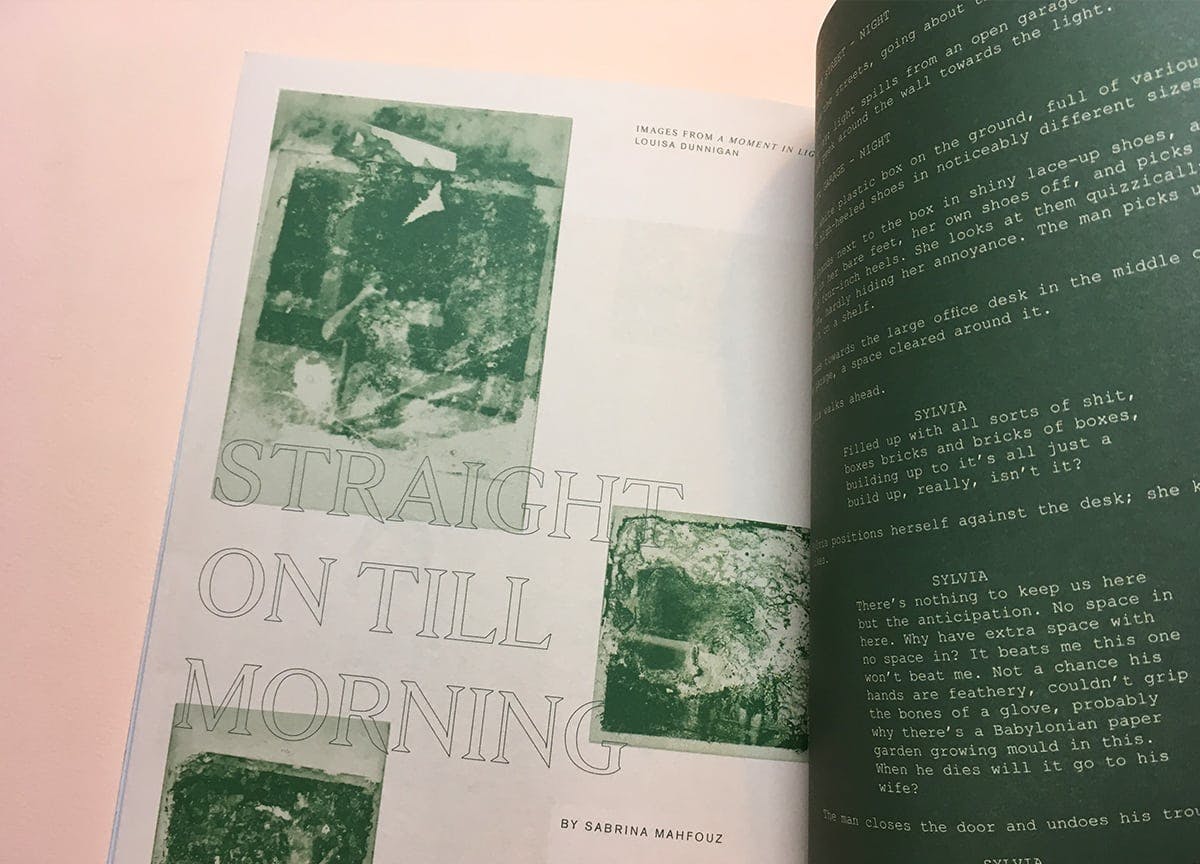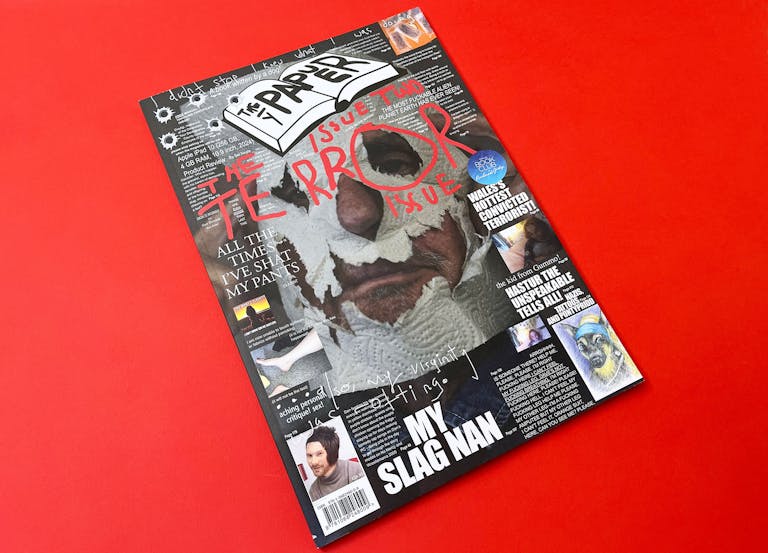Scenes Journal treats the screenplay as its own literary form
From the feminist perspectives of Filmme Fatales to the alphabetical theme of Shelf Heroes, there is no shortage of independent magazines that focus on film. But we keep coming across new ways the genre is being explored, and the London-based Scenes Journal does it elegantly in their small format title. Treating screenwriting as its own, unique form of literature, it pairs screenplays with photography to present a novel way of immersing the reader in cinema.
Their first issue is themed on nostalgia, and we got in touch with editors Shalini Adnani and George Bartlett to talk about experimental writing, ‘hardware pornography’ in filmmaking, and the movie that always makes them feel nostalgic.

Why did you want to make a magazine about screenwriting?
We are both filmmakers and we kept reading great scripts and feeling like they were pieces of literature on their own. Sometimes, a great screenplay can be more enjoyable than the actual film. So we felt it would be interesting to appreciate the art of screenwriting as a form of writing itself.
Firstly, it’s important audiences start reading screenplays and focus more on the story, due to the current trend of hardware pornography and an obsession with high-end, glossy images, which goes hand-in-hand with lots of films valuing ‘style over substance’. On the other hand, we also want to look at screenwriting as a form on its own, like a haiku or an essay, that allows writers to experiment.

How does Scenes Journal look at the screenplay as a form of its own?
We celebrate the screenplay form by allowing writers to experiment. We like to reach out to poets, novelists and writers of all kinds and ask them to try writing screenplays, knowing that they will interpret it a different way. One of our favourite pieces in issue one is Sabrina Mahfouz’s piece Straight on Till Morning, which is almost a spoken word script. Furthermore, we are having events where we do table readings of screenplays so audiences can appreciate actors reading scripts on a cold read.

The first issue’s theme is nostalgia — which film makes you feel nostalgic?
George’s film would be Ferris Buller’s Day Off (1986) and mine would be Heathers (1988). Although both of us agree Matilda (1996) is very nostalgic — the list goes on really. I imagine lots of 80s films make people nostalgic, even though we didn’t even grow up in the 80s and just wish we had. However, I think we wanted the first issue to focus on all aspects of the past, which includes nostalgia, but isn’t reduced to that. So, one of the pieces talks about nostalgia in Midnight in Paris (2011) and how we are all craving to belong to another time and era. But there are other pieces that talk about family, identity, and gender which all encompass things from the past — individually or more universally.

I really like the personal perspectives in the photo series. Can you tell us about the thinking behind these features?
When talking about our pasts, everyone thinks of something different, but it’s often so personal and intimate it becomes even more potent and universal. I guess the past is always very personal, even if we look at it through history, the way our history is documented or perceived is personal. One will think about where their ancestry was during certain events or what their cultural identity might have been.
Although we are still focusing on photography, our next issue is aiming to have more screenwriting and only a couple of photographic essays. For our next issue we will only feature a couple photographers, one being the recent British Journal of Photography winner Cesar Dezfuli.

Lastly, what was the most inspiring and the most challenging thing about launching a magazine?
The most inspiring thing is definitely putting it all together and then being able to hold it in your hands and flip through it. There’s just nothing better than the smell of paper, ink, and binding glue (personally). But on the other hand, I think we were both very inspired by Cahiers du Cinema and their ethos. They came together with a manifesto for auteur cinema and Scenes, to us, is a way of saying: story rules everything, and screw this obsession with big cameras and pretty images.
Scenes is a space for film lovers to come together, write together, make films together, and celebrate film together. The response was also very inspiring, it’s great to find people who feel the same way and like what we are doing — it definitely inspires us to have more events and bring people together. The most challenging for us was actually designing it. A lot of people making magazines today are designers, but for us, it was the opposite. We were all writers and filmmakers with some grasp of design but not all the knowledge necessary. That side was, and still is, a challenge.
We are working on our next issue ‘Fractured Societies’ which focuses on the divides in our society, including an interview with filmmaker Joel Potrykus. It’s a really interesting issue and we think it’s more focused and precise in what kind of magazine we want to be.





—
We love magazines — sign up to Stack and get our favourites delivered to your door






